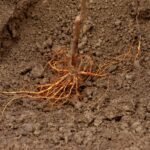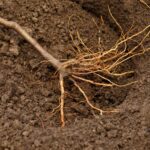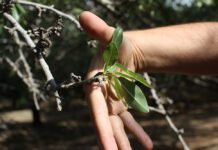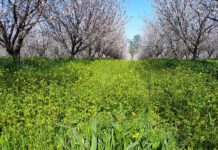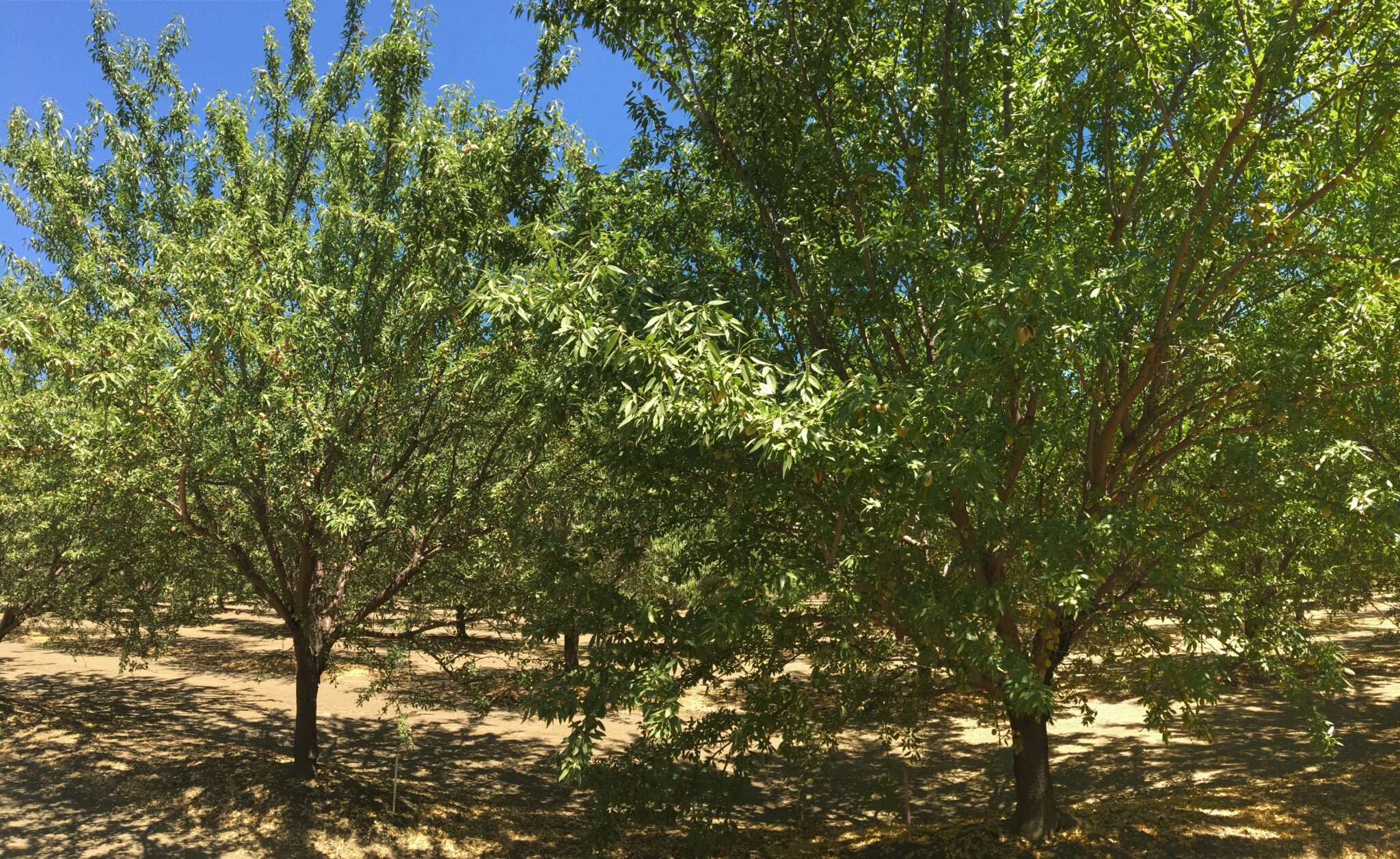
Choosing the correct almond rootstock based on specific environmental limitations at an orchard site can help ensure long-term productivity.
Speakers at the 2021 Almond Conference rootstock presentation stressed that the best rootstock choice made for a 20-year orchard investment should be based on appropriate vigor, rooting anchorage, tolerance to poorly drained soils, nematodes, salt and boron, root rots, intermittent flooding and replant syndrome.
Since many speakers pointed out that there is no ‘perfect’ almond rootstock, making the best possible planting choice for a specific orchard site relies on a number of data points from rootstock trials.
“Selection is extremely important,” UCCE Orchard Systems Farm Advisor Roger Duncan said. “Beyond biotic and abiotic issues, there are many other things to consider with rootstock selection. It should be based on physical, chemical and biological conditions in your field.”
Rootstock Genetics
Almond rootstock genetics come from peach, plum and almond sources. Almond genetics contribute drought tolerance, tolerance to alkaline soils, longevity, deep roots and vigor. However, they are susceptible to wet soils and associated diseases.
Peach rootstock genetics contribute compatibility with almond scions and less susceptibility to wet soil conditions. They are not tolerant to salt or alkaline soil conditions.
Plum genetics add tolerance of low oxygen conditions due to wet soils and diseases, including Phytopthora, crown gall and oak root fungus. They have variable compatibility with almond genetics.
Many hybrid rootstocks, including numerous complex hybrids, have been developed from almond, peach and plum genetics. Research trials determined their salt tolerance, vigor and canopy size among other traits. Findings determined that rootstock characteristics tend to fall in behind their almond, peach or plum parents. Peach-almond hybrids are among the most tolerant commercial rootstocks to sodium, chloride, high pH and alkaline soils and water. They are also the most vigorous and may have higher yield efficiency in many cases.
They do not, Duncan said, perform well in all conditions.
Almond growers and farm managers should determine limiting factors of an orchard site and choose appropriate rootstocks. High boron levels in the soil and anchorage to withstand high wind conditions are two examples of orchard site limitations. Yolo County UCCE Orchard Systems Advisor Katherine Jarvis-Shean noted that the correct rootstock can come to the rescue, keeping boron from moving into the scion and providing a strong root system.
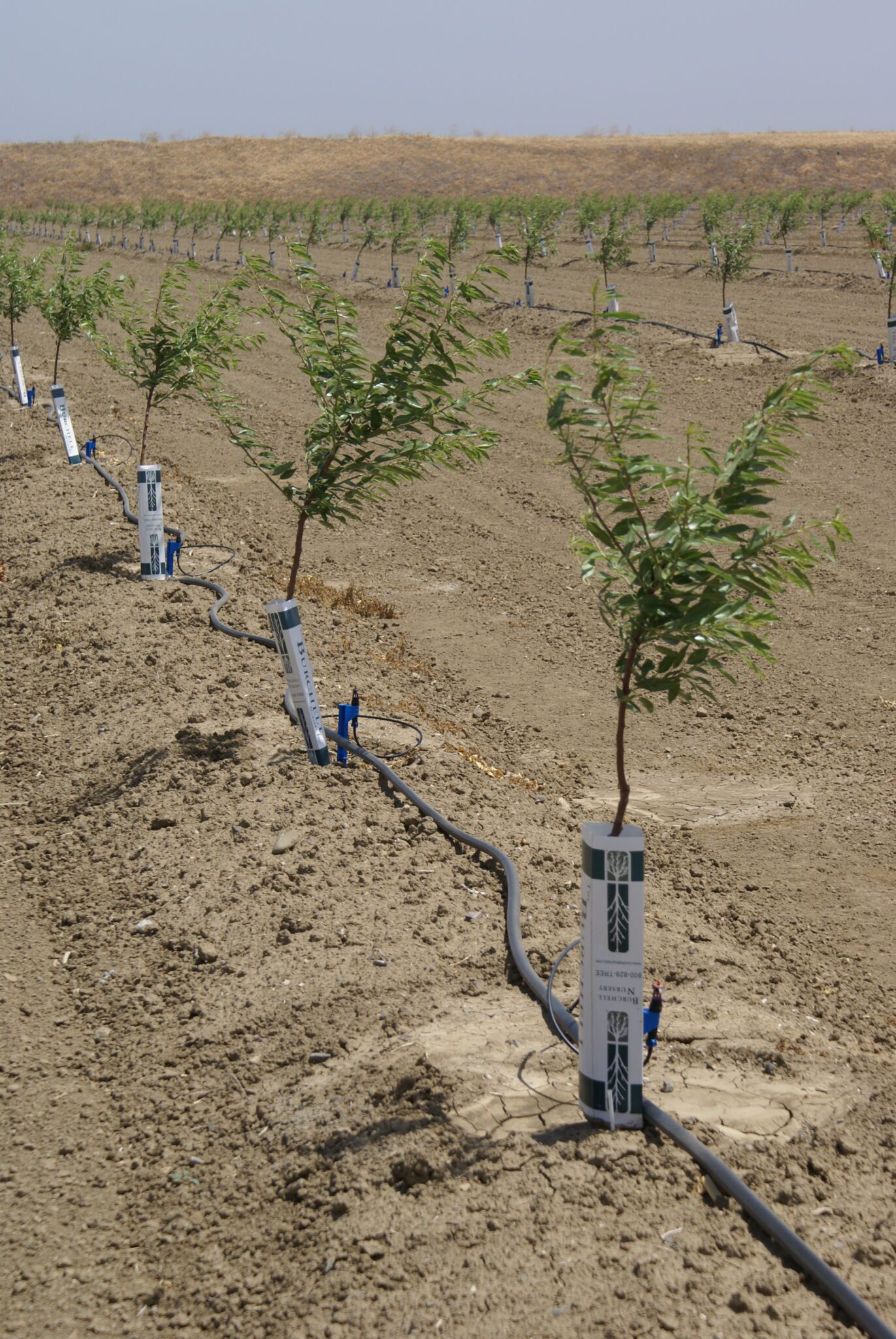
Disease Management
Almond industry trends that justify more attention to rootstocks for management of Phytopthora and replant diseases include a shift from peach to peach-almond hybrid rootstocks. Other trends are continuing apparent infestation of some nursery stock with Phytopthora species, continuing shifts in and movement of populations of Phytopthora, planting systems that require frequent, localized irrigations with drip or microemitters on root crowns and suboptimal placement of drip or microemitters as orchards develop along with increased restrictions on soil fumigations.
USDA-ARS researcher Greg Browne noted that rootstocks are valuable tools for management of crown and root rots and Prunus replant disease.
Phytopthora diseases are multiple and diverse and the vast majority infect through roots and crown. A second problem for orchard establishment is Prunus replant disease. This microbe-induced growth suppression in almonds planted after almonds is distinct from nematode parasitism and is impacted by many factors.
Give rootstocks a chance by keeping the graft union above the soil line and avoiding soil water saturation at the crown, Browne said. When planting, it is best to position rootstocks to serve as barriers to scion infection by Phytopthora.
Browne said that greenhouse and orchard trials detected superior resistance to Phytopthora in several commercial and experimental rootstocks. In addition, the resistance was found in clones of several rootstock types, including peach, peach-almond, peach-plum and complex hybrids, indicating strong potential for valuable selections.
A sensitivity trial of different rootstocks to Prunus replant disease showed that peach-almond hybrids and plum or plum hybrids have less sensitivity than peach rootstocks.
Nematode Tolerance
As for nematode resistance, again there is no ‘perfect’ rootstock, UC Riverside Nematologist Andreas Westphal reiterated. One rootstock is not tolerant or resistant to all destructive nematode species.
Westphal explained that resistance is the ability of a plant to reduce nematode reproduction. No nematode reproduction occurs in a highly resistant plant, a low level of reproduction occurs in a moderately resistant plant and unchecked nematode reproduction occurs in a susceptible plant.
Tolerance is the ability of a plant to grow and yield well even when infested with plant parasitic nematodes.
The root lesion nematode remains one of the biggest threats to almond tree health. Infestations of root lesion nematode can have a negative effect on young tree root systems as it is closely associated with plant growth disruption. Management strategies for root lesion nematodes are being developed by researchers at the UC Kearney Agriculture and Research Center.
Rootstock tolerance to nematode infections alone will not ensure healthy trees. Westphal said that environment and drought stress can also impact tree health.
Current status of rootstock research includes hybrids with nematode resistance and tolerance identified, hybrids with multiple resistances identified and hybrids under horticultural and susceptibility evaluations. Researchers include Dan Kluepfel, Greg Browne, Malli Aradhya and Tom Gradziel, USDA-ARS and UC Davis.
Speaker Chuck Fleck with Sierra Gold Nurseries noted that while almond rootstocks are a 20-year investment, “it’s all about risk avoidance” when selecting rootstocks.
Tools have been developed to help with rootstock choices and keep risk at an acceptable level, Fleck said. He noted that in the last ten years, many new rootstocks have been developed for almond production and both public and private breeders continue to develop more.

Cecilia Parsons
Cecilia Parsons has lived in the Central Valley community of Ducor since 1976, covering agriculture for numerous agricultural publications over the years. She has found and nurtured many wonderful and helpful contacts in the ag community, including the UCCE advisors, allowing for news coverage that focuses on the basics of food production.
She is always on the search for new ag topics that can help growers and processors in the San Joaquin Valley improve their bottom line.
In her free time, Cecilia rides her horse, Holly in ranch versatility shows and raises registered Shetland sheep which she exhibits at county and state fairs during the summer.







